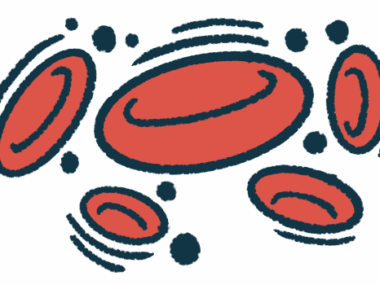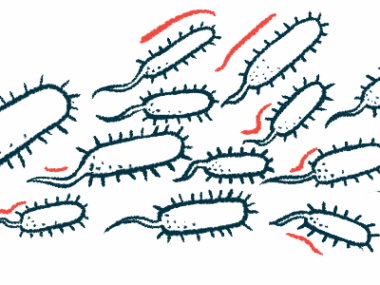Enjaymo treatment eases CAD in man, 73, on chronic dialysis: Report
Case in Japan may be first use of therapy in patient undergoing dialysis
Written by |

Enjaymo (sutimlimab) was effective at controlling signs and symptoms of cold agglutinin disease (CAD) in a man in his 70s being given dialysis for kidney failure, a study in Japan reports.
“To the best of our knowledge, this is the first report of CAD in a patient undergoing [dialysis] who was treated with [Enjaymo],” the researchers wrote.
Anemia, or low red blood cells, may occur in people undergoing dialysis due to an underlying kidney disease. However, the researchers noted, its resistance to standard treatment, along with worsening with lower temperatures, may indicate CAD.
The man’s case was detailed in a report titled “Efficacy of sutimlimab for cold agglutinin disease in a patient on chronic hemodialysis,” which was published in the journal CEN Case Reports.
CAD is a rare autoimmune disease marked by hemolytic anemia — a specific form of anemia caused by red blood cell destruction, or hemolysis — that occurs at low temperatures. As a result, patients often develop symptoms like anemia and fatigue.
Patient was being treated for kidney failure
Hemolysis in CAD is triggered by self-reactive antibodies called cold agglutinins that promote the activation of the immune system’s complement cascade, which, together, mark the red blood cells for destruction.
Enjaymo, an antibody-based therapy designed to prevent activation of the complement cascade, is the only treatment approved to date for CAD. It is administered as an infusion directly into the bloodstream every other week.
People with kidney failure typically undergo dialysis, in which the blood goes through a device outside the body that removes extra water and waste before being delivered back into the person.
Kidney disease often leads to anemia due to the kidneys’ inability to properly produce erythropoietin, a hormone that stimulates red blood cell production. Therefore, these patients are also commonly given treatment, such as Aranesp (darbepoetin alpha), to boost such production.
“Reports of cold agglutinin disease (CAD), an autoimmune hemolytic anemia, in dialysis patients are limited,” the researchers wrote.
Now, a team of researchers in Japan described the case of a 73-year-old man undergoing chronic dialysis for kidney failure who developed CAD that was successfully treated with Enjaymo. In Japan, the therapy started to be covered by health insurance in October 2022.
The man had an 11-year history of dialysis, also known as hemodialysis, for kidney damage caused by diabetes. He also had kidney disease-related anemia that was being effectively controlled with Aranesp to stimulate red blood cell production.
Man given Enjaymo after other treatments failed to ease anemia
The patient had begun experiencing mild fatigue in the previous year, during winter. At that time, his levels of hemoglobin, the protein in red blood cells that carries oxygen throughout the body, dropped below normal. Lower-than-normal hemoglobin levels also classify as anemia.
His hemoglobin levels then increased in the warmer months between April and September, and dropped again in the fall, with the occurrence of fatigue once again. Both his anemia and fatigue worsened in the winter, and hemoglobin levels did not increase despite weekly blood transfusions and increasing doses of Aranesp.
As such, the man was hospitalized. He had no signs of Raynaud’s phenomenon, which causes fingers and toes to feel numb in response to cold, or skin discoloration due to low oxygen levels — two common CAD symptoms.
However, blood work showed several markers of hemolysis, indicating hemolytic anemia. He also was positive for complement proteins attached to his red blood cells, and had high levels of cold agglutinins, confirming a CAD diagnosis.
Given that further tests showed no evidence of diseases that could be causing CAD, the man was diagnosed with primary cold agglutin disease, meaning its cause is unknown.
He was discharged with instructions to avoid exposure to cold temperatures. His dialysis sessions also were performed at higher temperatures, as the process of dialysis “may cool the blood and cause hemolysis,” the researchers wrote.
This case shows that [Enjaymo] is effective for the treatment of anemia due to CAD with [simultaneous kidney disease-related anemia] in a patient on chronic HD [hemodialysis].
For this patient, however, fatigue and anemia persisted until temperatures started to rise again with the arrival of spring. The following winter, about one year after the CAD diagnosis, his hemoglobin levels dropped again.
He then received treatment with rituximab (sold as Rituxan, among others), which is often used off-label as a first-line CAD treatment due to its ability to kill B-cells, the immune cells responsible for producing antibodies, including cold agglutinins. However, no marked improvements were observed.
The man was then started on Enjaymo, after which his hemoglobin levels started to increase, even though the weather was cooler. His fatigue was lessened and his hemoglobin levels remained stable six months after starting Enjaymo. The dose of Aranesp was reduced to values before CAD development.
“This case shows that [Enjaymo] is effective for the treatment of anemia due to CAD with [simultaneous kidney disease-related anemia] in a patient on chronic HD [hemodialysis],” the researchers wrote.
The team noted that reports of cases with similar circumstances would be “desirable.”
“The duration of [Enjaymo] administration for CAD associated with HD remains an unsolved concern for future studies,” the researchers concluded.







